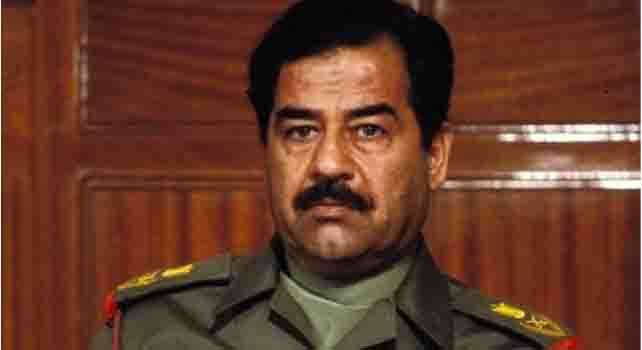Saddam Hussain still resides in the hearts of Iraqi people, know what is the matter

Twenty years after the fall of his regime, late Iraqi President Saddam Hussein remains admired and popular in Jordan, where his image can still be seen across the country. The instantly recognizable face pops up on everything from bumper stickers to mobile phone cases in neighboring Jordan, despite symbols and images associated with his regime being outlawed in Iraq itself. On March 20, 2003, then US President George W. Bush launched Operation “Iraqi Freedom” with a ground invasion by 150,000 American and 40,000 British troops under the pretext of destroying Iraq’s purported arsenal of weapons of mass destruction. Saddam last appeared in public on 9 April, hours before the announcement of the fall of Baghdad. After ruling Iraq strictly since 1979, Saddam lay low until his hiding place was discovered eight months later by American troops. He was later tried, convicted and hanged on the morning of 30 December 2006. In Iraq, displaying pictures or slogans of the ousted dictator is a crime and arrests are sometimes made. Last October, four people were detained for “glorifying the dead regime during National Day celebrations” in Anbar province, between Baghdad and the Jordanian border. But in Jordan, many remember Saddam fondly for his support of the Palestinian cause, Arab nationalism and resistance to Western intervention in the Middle East. “Thousands of Jordanians graduated with free scholarships in various fields from Iraqi universities during the Saddam era,” lawmaker Khalil Attiyah told AFP. He said that Saddam supported the Palestinian insurgency, or intifada, and “gave funds to the families of Palestinian martyrs and rebuilt the homes of those who had them demolished by the enemy”. Attiyah believes that “it is normal for Jordanians to love and not forget him and to have pictures of him showing their loyalty to this heroic leader”. Salameh Blewi, 67, a Jordanian contractor who visited Baghdad in the 1980s, called Saddam “a respected and honest Arab leader with honorable positions”. “Despite the (1980–1988) war with Iran, Iraq was a country of the rich, but after Saddam it was plundered by the corrupt,” Blevy said. Iraq’s former prime minister Mustafa al-Kadhemi said in a March television interview: “Since 2003, the money that has been wasted is more than $600 billion.” Kadmi alleged that it went to “the corrupt and the parties in power”. Transparency International, a corruption-monitoring organization, has ranked Iraq as one of the 25 most corrupt states in the world. Saddam’s brutal legacy has done little to influence many Jordanians, and its aftermath only reinforces their views. Shahar Abu Sharq, a 67-year-old seller of mobile phone accessories in Amman, said, “Jordanians know that Saddam Hussein is a brave and nationalist Arab leader, who bravely defended Arab issues. We all love him.” “What happened was not the collapse of Saddam’s regime, but the collapse of Iraq. Unfortunately, post-Saddam Iraq was depleted and systematically destroyed.” Zuhair Amleh, 70, sells old books in the Hashemite Plaza Square in Amman. “Unfortunately, Iraq cannot return to the way it was before,” he said. “Those ruling Iraq are now sectarian and agents of Iran,” he said. The 2003 invasion led to the worst years of violence in Iraq’s history. Most of the Shiite militias involved in the violence were Saddam’s opponents in exile, members of radical Islamic parties or armed groups that had taken refuge in neighboring Iran and even sided with Tehran in the 1980s war. By the time US troops left Iraq in 2011, the conflict had claimed the lives of more than 100,000 Iraqi civilians, according to the Iraq Body Count group. US losses totaled about 4,500. “The main reason Jordanians loved Saddam is because they saw him as a hero and a savior who had a mission to promote the Arab nation at all levels,” Attiyah told AFP. He said that Saddam was “the only Arab leader who established a military manufacturing base from bullets to missiles and bombarded the Zionist entity (Israel) with 39 missiles made by Iraq”. Following the start of the US-led Operation Desert Storm against Iraq in 1991, Iraq bombarded Israel with Scud missiles. In a shop in Amman, 19-year-old Anas Nahas arranged for mobile phone covers bearing Saddam’s likeness. Nahas said, “If he were still alive, not much would have happened.” He cited “the crimes of the Israeli occupation against our people in Palestine … the collapse of Arab regimes, the wars in Syria and Yemen, and the humiliation of Arabs in the present”.
















